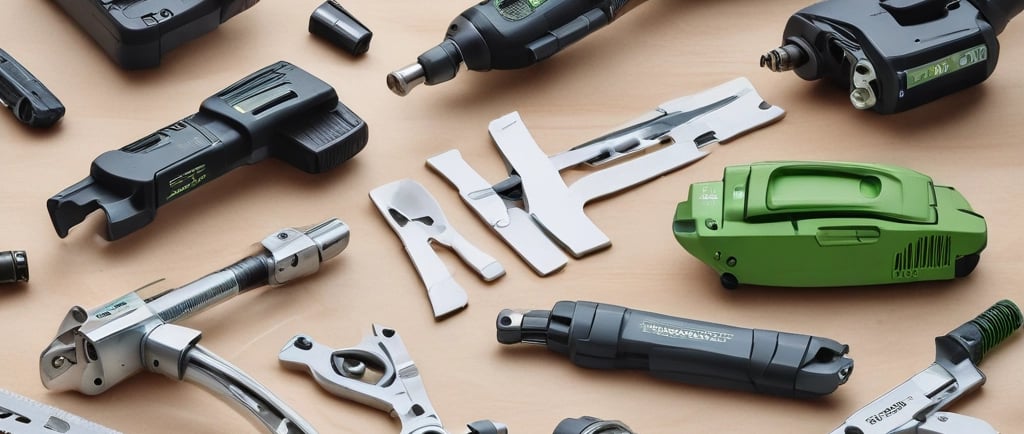Essential Tips for Maintaining Your Ryobi Batteries for Long Life
RYOBI GENERAL
11/2/20254 min read


Understanding Your Ryobi Battery
Ryobi batteries play a pivotal role in powering the wide range of tools offered by the brand. Currently, the most common types of Ryobi batteries include lithium-ion and nickel-cadmium (NiCd) variants. Each type has distinct characteristics that influence performance, longevity, and maintenance requirements.
Lithium-ion batteries are known for their high energy density and lightweight construction. This makes them the preferred choice for many modern Ryobi tools. They possess a longer lifespan than NiCd batteries, often lasting over two years with proper care. Lithium-ion batteries exhibit a low self-discharge rate, allowing them to retain charge even when not in use for extended periods. Additionally, they have a charge cycle that provides consistent power output until depletion, ensuring optimal performance throughout its usage. However, it is essential to monitor their temperature during use and charging, as higher temperatures can lead to decreased battery efficiency or potential damage.
On the other hand, nickel-cadmium batteries have been a traditional choice for power tools. While they are usually more affordable, they come with certain limitations, including a memory effect which can reduce their effective capacity over time. This means that if they are not fully discharged before recharging, they may hold less charge. Despite this drawback, NiCd batteries can handle extreme temperatures and provide robust performance in outdoor tools. They also take longer to charge compared to lithium-ion options, which may be a consideration for users prioritizing efficiency.
Understanding how these types of Ryobi batteries function is essential for users. By recognizing their specific maintenance needs and being aware of common signs of wear—such as reduced run time or difficulty holding a charge—users can better care for their batteries. This knowledge ultimately contributes to enhanced performance and extended battery life.
Best Practices for Charging Ryobi Batteries
To ensure the longevity of your Ryobi batteries, understanding the best practices for charging them is essential. One of the primary considerations when charging is the frequency of charge cycles. Ideally, lithium-ion batteries, commonly used in Ryobi products, should not be charged more often than necessary. It is advisable to charge the battery when it reaches around 20% of its total capacity. This practice prevents the detrimental effects of deep discharges, which can shorten the lifespan of the battery.
Additionally, it is crucial to avoid allowing your Ryobi battery to completely discharge. A full discharge can diminish the battery's capacity over time, leading to reduced performance. Instead, aim to recharge your battery before it falls below the 20% threshold. Following this guideline will not only enhance the longevity of your battery but also maintain its efficiency.
When it comes to the ideal charging conditions, ensure that you are charging your battery in a cool, dry place. High temperatures can negatively affect the charging efficiency and overall health of the battery. Similarly, charging the battery in extremely cold environments is also not recommended, as this can impede its ability to charge fully.
Charge times will vary depending on the size of your Ryobi battery. For smaller batteries, the charging process can take approximately 30 to 60 minutes, while larger batteries may require up to three hours. It is essential to monitor the charging indicator lights on your Ryobi charger. These indicators provide valuable information, signaling when the battery is fully charged. Avoiding overcharging is critical; once the battery is fully charged, unplug it to prevent unnecessary stress on the battery's cells.
Storage Tips for Extended Battery Life
Proper storage of Ryobi batteries is crucial for ensuring their longevity and efficiency. When not in use, the way these batteries are stored can significantly impact their lifespan. The ideal temperature range for storing Ryobi batteries is between 32°F and 80°F (0°C and 27°C). Extreme temperatures can cause premature wear or damage to the battery cells, reducing performance. In addition to temperature, humidity levels also play a pivotal role; a cool, dry environment is preferred to minimize the risk of corrosion.
When it comes to the charge level of stored batteries, it is generally advisable to keep them partially charged. Storing a Ryobi battery at around 40% to 60% charge is ideal. Storing a battery fully charged can lead to unwanted stress on the cells, while complete discharge can cause irreversible damage. Therefore, ensuring it is maintained at an appropriate charge level is essential for extending battery life.
Additionally, periodically checking and maintaining stored Ryobi batteries is critical for preventing deterioration. It is recommended to inspect the batteries every 1-3 months. During these check-ups, examine for any signs of leaks, swelling, or corrosion. If any such issues are detected, the battery should be disposed of properly and replaced. Furthermore, giving the batteries a light recharge if they dip below the recommended charge threshold can keep them in good working condition.
In summary, adhering to the recommended storage practices significantly enhances the life of your Ryobi batteries. By keeping them in a cool, dry place, monitoring their charge levels, and conducting regular inspections, battery performance and longevity can be maximized.
Troubleshooting Common Battery Issues
Users of Ryobi batteries may occasionally experience various issues that can impede their performance. Among the most frequently encountered problems are reduced runtime, failure to charge, and physical damage. Understanding the symptoms associated with these issues is crucial for effective troubleshooting and maintaining the longevity of your Ryobi batteries.
One common sign of battery trouble is reduced runtime during operation. If you notice that your tool is not performing as efficiently as it once did, it may indicate that the battery is nearing its end of life or requires maintenance. In such situations, a good first step is to reset the battery by removing it from the tool and allowing it to sit for a few minutes before reinserting it. This simple action can sometimes refresh the battery's functionality.
Another issue that users might face is a failure to charge. If the battery does not respond when connected to a charger, it might be wise to inspect the charging contacts. Corroded terminals can hinder the charging process and are often overlooked. Cleaning the contacts with a soft cloth can help restore connectivity. If these measures do not resolve the issue, testing the charger with another battery can help determine whether the charger itself is malfunctioning.
Physical damage to the battery, such as cracks, dents, or leakage, is another critical concern. Any visible signs of damage may indicate that the battery is no longer safe to use and should be replaced immediately. Monitoring your batteries regularly can help catch these problems early. By performing routine checks and addressing any issues promptly, you can ensure that your Ryobi batteries remain in optimal condition, providing reliable power for your tools.
